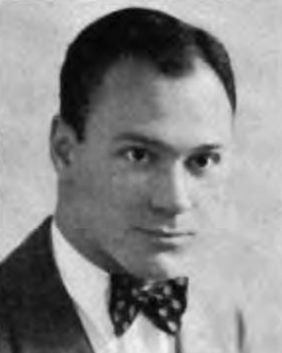Related Research Articles

Vale Canada Limited is a wholly owned subsidiary of the Brazilian mining company Vale. Vale's nickel mining and metals division is headquartered in Toronto, Ontario, Canada. It produces nickel, copper, cobalt, platinum, rhodium, ruthenium, iridium, gold, and silver. Prior to being purchased by CVRD in 2006, Inco was the world's second largest producer of nickel, and the third largest mining company outside South Africa and Russia of platinum group metals. It was also a charter member of the 30-stock Dow Jones Industrial Average formed on October 1, 1928.
James K. Gordon is a Canadian politician who served as mayor of Sudbury, Ontario from 1976 to 1981 and from 1991 to 2003, and as a Member of Provincial Parliament for the provincial electoral district of Sudbury from 1981 to 1987. He briefly served in the Executive Council of Ontario, holding the position of Minister of Government Services in 1985.
Louis Siminovitch was a Canadian molecular biologist. He was a pioneer in human genetics, researcher into the genetic basis of muscular dystrophy and cystic fibrosis, and helped establish Ontario programs exploring genetic roots of cancer.

Adel S. Sedra is an Egyptian Canadian electrical engineer and professor.

Richard Geren, OC (1917–2002), was an American geologist who was a key member of a team that defined high-grade iron ore deposits in the Knob Lake area of northeastern Quebec. The deposit's magnitude and significance led to the formation in 1949 of the Iron Ore Company of Canada (IOCC). Geren led pre-production studies and became Manager of IOCC's operations at Schefferville, where he faced numerous challenges associated with building a large mining operation in isolated sub-Arctic conditions.
James Milton Ham, was a Canadian engineer, university administrator and President of the University of Toronto.

James Walter Douglas was a British North America born mining engineer and businessman who introduced a number of metallurgical innovations in copper mining and amassed a fortune through the copper mining industry of Bisbee, Arizona Territory and Sonora before and after the turn of the 20th century.
Lloyd Montgomery Pidgeon, was a Canadian chemist who developed the Pidgeon process, one of the methods of magnesium metal production, via a silicothermic reduction. He is considered the "father" of academic metallurgical research in Canada.
James Edward Gill was a scientist, teacher, explorer and mine developer. Along with William R. James, Sr. he discovered the high-grade iron ore deposits of Quebec and Labrador. He is remembered for his important contributions in the fields of stratigraphy and Pleistocene geology.
Duncan R. Derry, OC (1906–1987) was an internationally known English-Canadian economic geologist. He was largely responsible for the creation of the World Atlas of Geological and Mineral Deposits.

Michael Lawrence Haider was an American petroleum engineer, business executive, and a founder of the National Academy of Engineering. He was chairman of what later became Exxon Corporation from 1965 to 1969.
Anthony R. "Tony" Barringer was a Canadian geophysicist. He made numerous contributions to mineral exploration technology. His most famous work was the development of the INPUT airborne electromagnetic system, which has been credited in the discovery of tens of billions of dollars' worth of ore deposits.
Anthony James "Tony" Naldrett, FRSC was an English and Canadian geologist. He was an authority on the geology and origin of nickel-copper-platinum group element deposits, the tectonic setting in which they occur, the petrology of associated rocks, and controls on their composition. He was an expert on the reaction between sulfide and silicate melts, fractional crystallization of sulfide melts, and the role of hydrothermal fluids.

Selwyn Gwillym Blaylock was a part of starting the mining industry in western Canada. He was president of the Consolidated Mining & Smelting Co., a forebearer to Cominco and Teck Resources, recipient of several international awards for his work in metallurgy, and was the President of the Canadian Institute of Mining, Metallurgy and Petroleum in 1934–35. For his work he was inducted into the Canadian Mining Hall of Fame.
James Gordon Parr was an English-Canadian academic, broadcaster and provincial civil servant in the province of Ontario, Canada.
Louis Jean-Pierre Cabri (born February 23, 1934, in Cairo) is an eminent Canadian scientist in the field of platinum group elements (PGE) mineralogy with expertise in precious metal mineralogy and base metals at the Canada Centre for Mineral and Energy Technology (CANMET). First as research scientist and later as principal scientist (1996–1999). In the 1970s he discovered two new Cu–Fe sulfide minerals, "mooihoekite" and "haycockite". In 1983 Russian mineralogists named a new mineral after him: cabriite (Pd2SnCu).
Albert Gagnebin was a metallurgist who became president then Chairman of Inco Limited. He co-discovered ductile cast iron.
References
- 1 2 3 4 5 6 "J. Roy Gordon | the American Institute of Mining, Metallurgical, and Petroleum Engineers".
- ↑ "J. Roy Cordon, Led International Nickel and U.S. Subsidiary". The New York Times. 8 April 1980.
- 1 2 "GORDON, JAMES ROYCROFT".
- ↑ "Inco Case Study: The End of Monopoly: A New World for Inco (Part 3 of 3)". 18 February 2009.
- ↑ "J. Roy Gordon, B.Sc., Ll.D."
- ↑ "Inco Steps Up Research with $4 million Sheridan Park Lab" (PDF). No. 8. Inco Triangle. December 1967.
- ↑ "INCO R&D: Process Development, Product Development and Cyanide Destruction". 3 June 2011.